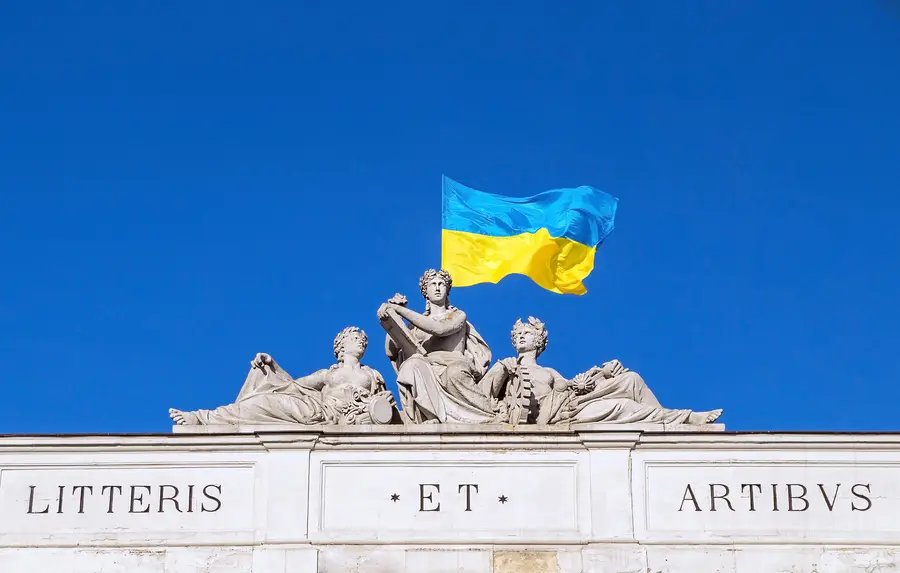Ukraine's journey to reform its science, technology, and innovation (ST&I) ecosystem since its independence in 1991 holds immense potential for the country’s economic growth and democratization, especially in the context of Russia’s war on Ukraine.
We spoke with RTI International’s Lena Leonchuk about a recent paper she wrote with researchers at the Center for Strategic and International Studies (CSIS) on Ukraine’s ST&I ecosystem, its importance to reconstruction, and what is needed to unlock its full potential.
Q: Tell us a bit about this paper. Why did you write it and what is it about?
As a Ukrainian as well as ST&I expert, this topic has particular significance to me. I co-authored the paper with Romina Bandura and Paula Reynal at CSIS because we saw that ST&I was not a significant part of the global discussion on Ukraine’s reconstruction, despite its incredible ability to deliver for the country’s post-war economy.
In the paper, we highlight some of the initiatives that are addressing the urgent needs of Ukraine’s science and education workforce. We also document why and how ST&I is critical for rebuilding the country so it can achieve its full potential in the decades to come.
I want to spark a wider conversation about how we can elevate the role of ST&I in advancing Ukraine’s economic development in equitable, democratic, and sustainable ways at this critical juncture in its history. ST&I represents an incredible asset in Ukraine for both growth and democratization.
Q: What is an ST&I ecosystem and why is it important for economic growth?
Education and science are fundamental elements of an ST&I ecosystem and, when aligned with industry and government, they create economic opportunity. Universities and vocational schools are a key actors in this system. By supplying talent, research, know-how, technology, and culture change, they advance the regional growth needed for equitable economic growth and political stability across any country, especially large ones. Industry translates those into practical applications while government plays an important role as a facilitator of these relationships.
There are many examples from around the world of how governments can enhance ST&I ecosystems and unlock their potential for growth, but we tend to underestimate its role. We often mention big university spin-offs or giants like Google, Microsoft, and Reddit that trace their roots back to students ideating on “the next big thing.” Yet we often overlook the underlying conditions that make a given environment fruitful for this kind of innovation, such as legal frameworks like the U.S. Bayh-Dole Act that enable cross-sector collaborations.
On implementation side, I’ve been fortunate to support a few of the initiatives that are well-documented examples of successful public investments in innovation at U.S. universities, such as: the U.S. National Institutes of Health proof-of-concept network, which fostered early biotechnology innovation at more than 10 regional hubs; and the U.S. National Science Foundation (NSF) Industry-University Cooperative Research program, which has supported consortium-funded R&D in engineering and the sciences since its inception in the 1980s. A more current example is the recent announcement of Regional Innovation Engines supported by NSF as part of the Creating Helpful Incentives to Produce Semiconductors (CHIPS) and Science Act of 2022, with U.S. universities playing a central role.
Q: What can you tell us about Ukraine’s ST&I system? What are the prevailing challenges and what is going well?
Ukraine inherited a ST&I system from the Soviet Union that was centralized and geared toward military and space technology. While this legacy gave Ukraine a strong footing in information technology (IT), physics, aerospace engineering, and other STEM fields, these successes cloud the perception of Ukraine’s true capacity.
Ukraine needs to think big, elevate its view of innovation beyond IT, and prioritize the underlying ingredients that make up any successful ST&I ecosystem: human capital, the investment climate, the regulatory environment, and the horizontal and vertical pathways for people, organizations, and sectors to cross-pollinate.
As we note in our paper, the Ukrainian legislature passed encouraging education and science reforms in the 2010s to modernize its ST&I ecosystem. Continued support of those reforms and a deeper bench of people who can implement them is needed to promote effective innovation and turn the country into a world-class center for R&D and innovation. Ukraine’s science enterprise, in particular, has been underfunded and under-prioritized since independence and, similar to other well-established systems, has strong hierarchical structures that undermine effectiveness.
Ukraine’s ST&I reforms, entrepreneurial vibrancy, new international connections, and strong leadership in IT sector including successful collaboration with USAID on Diia and defense innovation are encouraging developments and will need support to further grow Ukraine’s ST&I ecosystem in ways that meet the country’s economic and societal needs.
Q: Why is the ST&I ecosystem in Ukraine important for reconstruction?
Strong ST&I ecosystems have delivered jobs, investment, and growth in other parts of the world. We have evidence of this from post-war Europe and South Korea. They strengthened their ST&I ecosystems in the wake of war, which fast tracked reconstruction and growth that continues to this day. We should look at Ukraine’s ST&I potential similarly as a key asset for reconstruction.
The case of South Korea is particularly relevant. Even as a mostly agrarian country, it was able to build one of the world’s strongest high-tech economies while addressing the enormous security threat from its neighbor, North Korea. While South Koreans should be credited for this success, it would not have happened without foreign direct investment, especially from the U.S.
Post-war Europe and South Korea are also examples of how democracy can deliver for citizens. Ukraine is still a nascent democracy, though on some dimensions it shows even more democratization than established peers. Take for instance the vibrancy and strength of its civil society, which I explored in a recent study and which vaulted Ukraine into the top 10 most generous countries in 2022 according to the World Giving Index. Ukrainians, myself included, share a strong determination to remain democratic, even in the face of aggression and interference from Russia.
Supporting ST&I is a way for the U.S. to support both economic growth and democratic values in Ukraine. The Ukrainian people and our supporters are hungry for opportunities to strengthen Ukraine’s democratic framework. Prioritizing Ukraine’s ST&I ecosystem will provide such opportunities during this transformational time for Ukrainian society. For example, a multinational group of academics recently launched the American University Kyiv, powered by Arizona State University.
Q: What are your hopes for the future of the ST&I ecosystem in Ukraine?
My hope is that the international community will support the further development and modernization of Ukraine’s ST&I ecosystem as a key element of reconstruction. History has shown this has great potential for democracy and equitable economic growth.
Given the war, innovation capacity and skills in psychology and health will be particularly relevant in the decades ahead, as will history and culture for reconciling Ukraine’s past with our future as a democratic country. Successful reconstruction needs all of this.
Ukrainians remain united in our aspirations for freedom. Civil society has been growing and Ukrainians are funding their own war effort in unprecedented ways. Strengthening Ukraine’s ST&I ecosystem will have an incredible impact on Ukraine’s ability to recover from war and succeed as a democracy.

